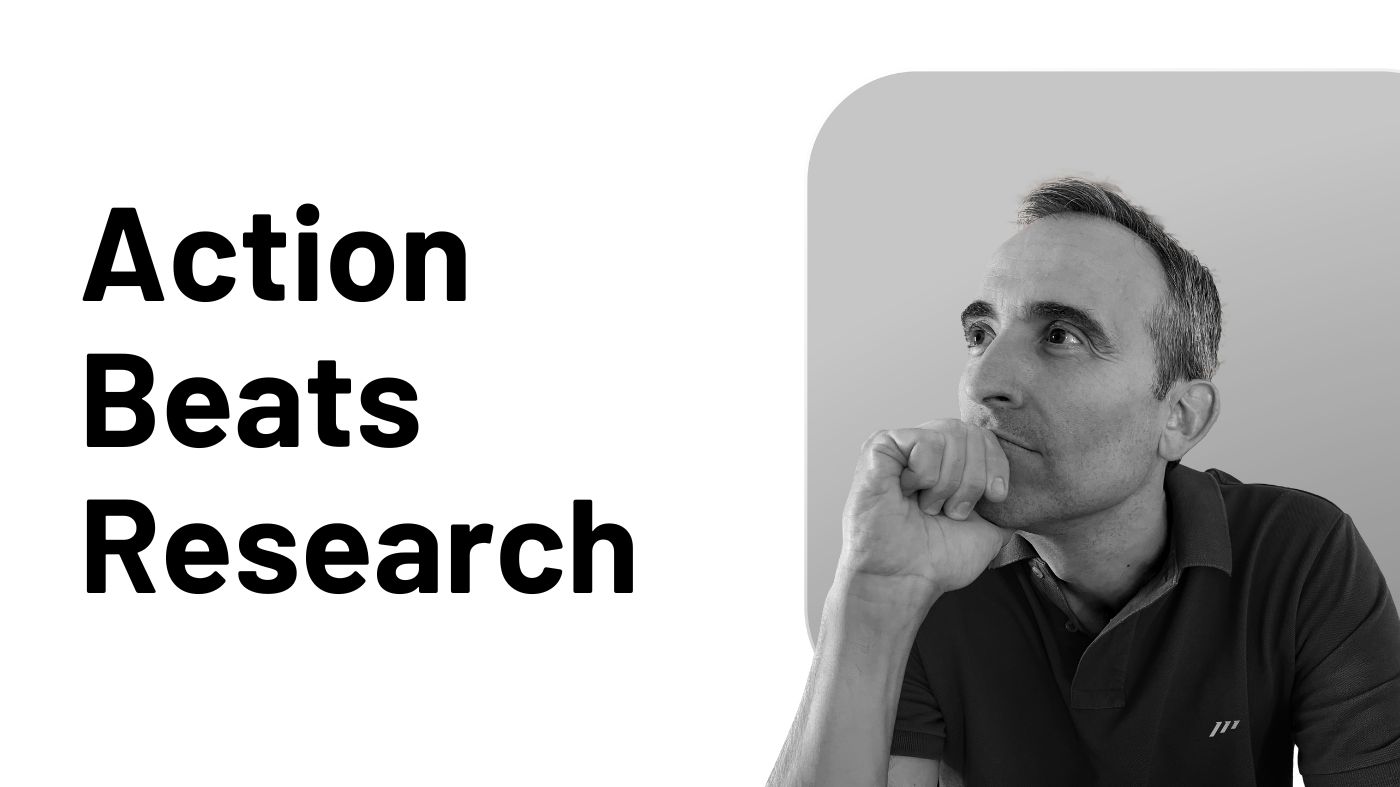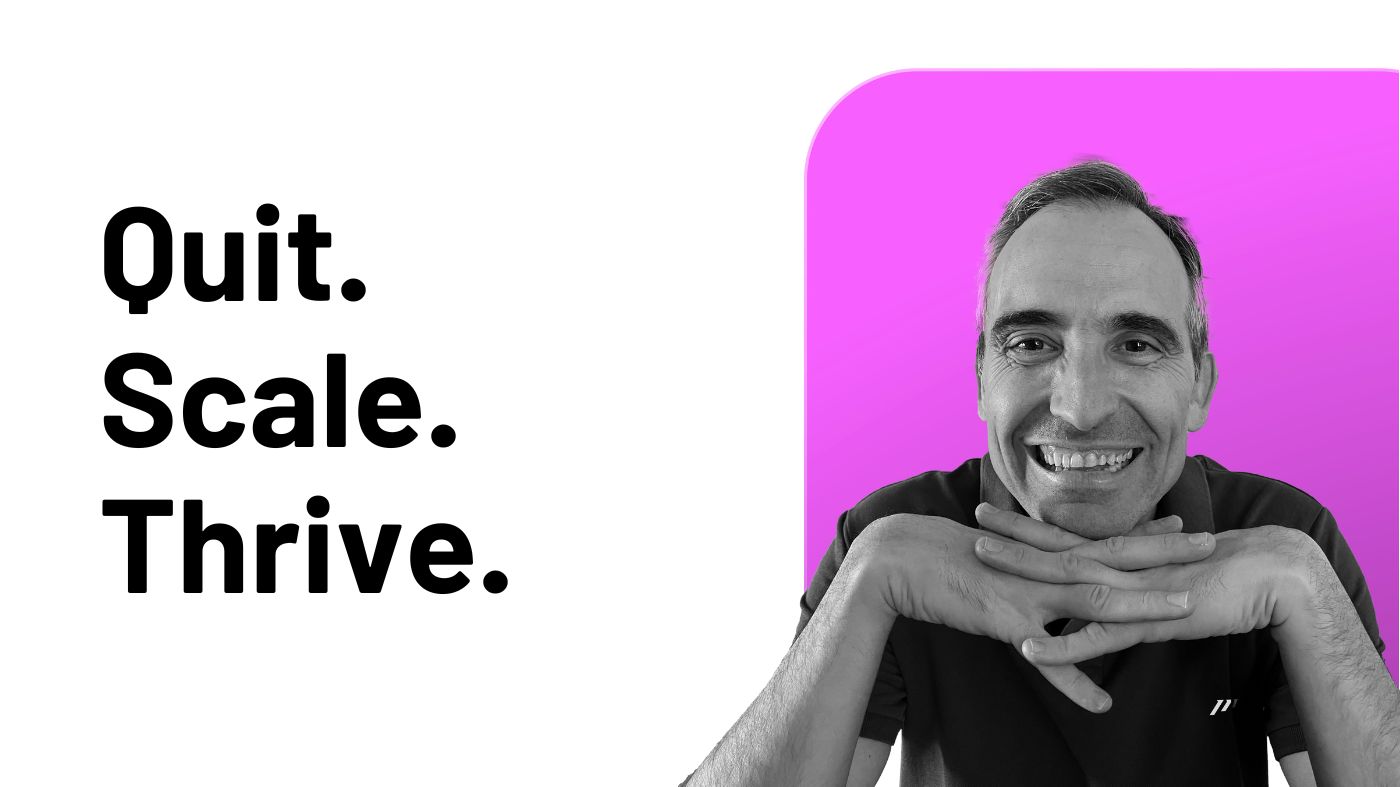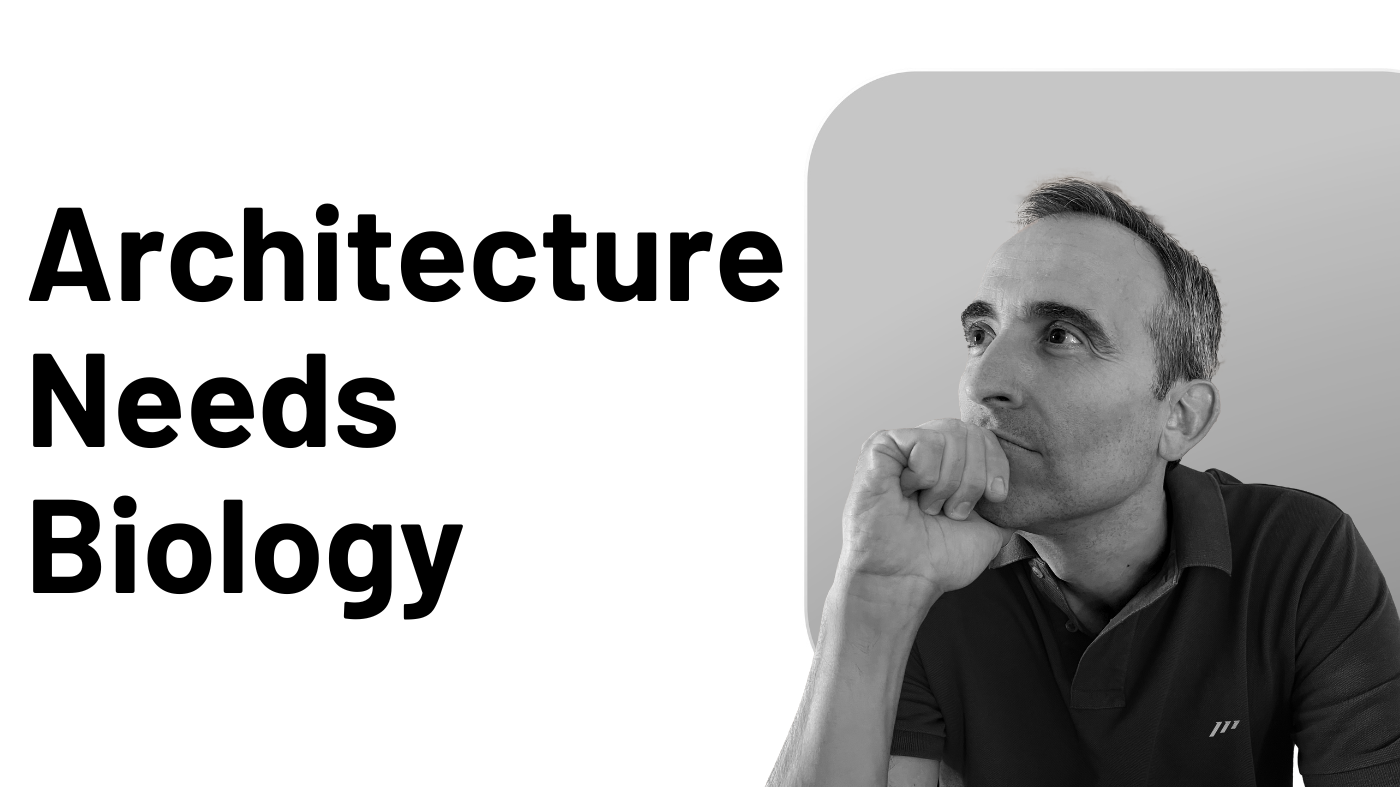In the world of investing, few names command as much respect as Warren Buffett and Charlie Munger.
For over five decades, this legendary partnership proved something profound about human achievement: two complementary minds working in harmony can create exponentially more impact than either could achieve alone.
Together, they transformed Berkshire Hathaway from a struggling textile company into one of the world’s largest and most successful conglomerates, generating returns that have made them icons in the financial world.
This pattern of transformative partnerships appears throughout history’s greatest achievements.
Steve Jobs and Steve Wozniak revolutionized personal computing.
Larry Page and Sergey Brin created Google’s search empire.
I’ve always believed that to create something truly impactful, you need two people.
That’s why I partnered with Tom Solid three years ago to design, build, and deliver something genuinely transformative to the work and life of busy professionals: ICOR®, a methodology that’s having a profound positive impact on how productivity is understood and executed.
In each case, the magic happened not from individual brilliance, but from the synergy of two different but complementary skill sets.
Warren Buffett, known as the “Oracle of Omaha,” built his reputation on a simple yet powerful investment philosophy: find undervalued companies with strong fundamentals, exceptional management, and durable competitive advantages, then hold them for the long term.
His approach to value investing has consistently outperformed the market, turning a $10,000 investment in Berkshire Hathaway in 1965 into over $50 million today.
But Buffett’s success wasn’t achieved alone.
Enter Charlie Munger, Buffett’s longtime business partner and the intellectual force behind many of Berkshire’s most successful investments.
While Buffett focuses on the numbers, cash flows, earnings, and financial metrics, Munger brings a different kind of expertise to the table: mental models (one of my passions for decades).
“You’ve got to have models in your head. And you’ve got to array your experience—both vicarious and direct—on this latticework of models.” — Charlie Munger
Munger’s approach to decision-making revolutionized how they evaluate investments. Instead of relying solely on financial analysis, he introduced frameworks from psychology, physics, biology, and other disciplines to create a multi-dimensional understanding of business opportunities.
This combination of Buffett’s financial acumen and Munger’s mental model framework created an investment approach that consistently identifies long-term winners.
Now, imagine these two investment legends were evaluating a different kind of opportunity: not a company or stock, but a productivity system.
Given their criteria for exceptional investments, I’m convinced they would recognize a well-designed productivity system as one of the highest-return investments available to any busy professional.
Why?
Because productivity systems exhibit all the characteristics that Buffett and Munger look for in their best investments, as they:
-
Compound returns over time.
-
Create sustainable competitive advantages.
-
Operate with minimal ongoing maintenance
-
Generate both tangible and intangible benefits that multiply year after year.
I’ve personally experienced this transformation firsthand.
After decades of building and refining my own productivity system, I can confidently say it represents the highest-return investment I’ve ever made.
The returns aren’t just measured in time saved or tasks completed; they extend to every aspect of professional and personal life, delivering what I consider the most profitable investment of my lifetime.
The Mental Models Advantage: Why Munger Would Champion ICOR® Workflows
Charlie Munger revolutionized investing by understanding a simple truth: the human brain needs frameworks to make sense of complexity.
His mental models approach didn’t just improve investment returns; it created a systematic way to think better across all domains.
“I think it is undeniably true that the human brain must work in models. The trick is to have your brain work better than the other person’s brain because it understands the most fundamental models: ones that will do most work per unit.” — Charlie Munger
But, what exactly is a mental model?
Think of it as a cognitive shortcut that simplifies complex reality into actionable patterns.
Munger collected these models from multiple disciplines because he realized that having just one lens to view problems severely limits your effectiveness.
“Well, the first rule is that you can’t really know anything if you just remember isolated facts and try and bang ’em back. If the facts don’t hang together on a latticework of theory, you don’t have them in a usable form.” — Charlie Munger
This is precisely why we developed ICOR® as a comprehensive methodology filled with what we call workflows, but what Munger would recognize as productivity mental models.
Each workflow in ICOR® serves as a repeatable framework that transforms chaotic information and scattered actions into systematic productivity.
Take The Capturing Beast, for instance.
This mental model solves the fundamental problem of information overload by filtering everything through three simple layers: Current Projects, Key Elements, and Topics.
When I first implemented this framework in my own work, I immediately noticed how it eliminated the anxiety of missing important information (FOMO, Fear Of Missing Out) while dramatically reducing the noise (and creating signal) that used to overwhelm my days.
Or consider The Execution Beast, which bridges the gap between strategy and implementation.
This workflow ensures that every task connects to larger goals through what we call PEA (another workflow): Plan, Execute, Align.
Having used this framework for years in my own businesses, I’ve watched it transform not just my productivity but my sense of purpose in daily work.
“Acquire worldly wisdom and adjust your behavior accordingly. If your new behavior gives you a little temporary unpopularity with your peer group… then to hell with them.” — Charlie Munger
Munger understood that the real power of mental models lies not in their individual brilliance, but in how they work together as an integrated system.
This is exactly what ICOR® provides: a complete latticework of productivity mental models (workflows) that work in harmony.
When you apply these workflows consistently, you create what Munger would call a “cognitive advantage”, a systematic way to outperform not through harder work, but through better thinking.
The beauty of this approach is that once these workflows become second nature, they operate almost unconsciously.
You no longer have to decide how to capture information or prioritize tasks; the workflows guide you automatically.
This is what Munger meant when he talked about having models that “do the most work per unit”: maximum effectiveness with minimal cognitive load.
The Compound Effect: How Productivity Systems Create Exponential ROI
Warren Buffett understands compound interest better than almost anyone alive.
His entire investment philosophy rests on this fundamental principle.
“Compound interest is the eighth wonder of the world. He who understands it, earns it; he who doesn’t, pays it.” — Albert Einstein (frequently quoted by Buffett)
But here’s what most people miss: productivity systems compound in ways that make even the best financial investments look modest.
When I first implemented my productivity system over three decades ago, I saved perhaps 30 minutes each day through better task management and information capture. That seemed insignificant at the time.
But let me show you the compound effect.
“Someone’s sitting in the shade today because someone planted a tree a long time ago.” — Warren Buffett
Those 30 minutes daily became 182 hours annually. That’s nearly five full work weeks I gained back each year. But the compounding didn’t stop there.
With those extra hours, I could take on more strategic projects, develop new skills, and build more productivity sub-systems that saved even more time.
By year three, I was saving closer to 90 minutes daily.
By year five, the time savings had become almost irrelevant compared to the quality improvements and stress reduction.
“Time is the friend of the wonderful company, the enemy of the mediocre.” — Warren Buffett
The leverage effect of productivity systems operates similarly to how Buffett uses financial leverage: amplifying returns without proportionally increasing effort.
My productivity system allows me to accomplish what would typically require a team of three people or even more.
Through automated workflows, strategic delegation frameworks, and systems that run on autopilot, I’ve created what Munger would call “leverage without downside risk.”
The autopilot aspect might be the most valuable feature of all.
After years of refining my ICOR® workflows, most of my daily productivity happens without conscious effort.
My productivity system capture information automatically, prioritize tasks systematically, and maintain alignment with my goals continuously.
This is exactly what Buffett looks for in his investments: businesses that continue generating returns with minimal ongoing management.
“The best business to own is one that over an extended period can employ large amounts of incremental capital at very high rates of return.” — Warren Buffett
My productivity system has become that kind of business for my personal and professional life.
Each new workflow I add, each process I refine, generates returns that multiply across every area of my work.
The initial investment of time and energy continues paying dividends years later, with no additional input required.
The Emotional Portfolio: Trading Suffering for Success
While Buffett and Munger are famous for their rational, numbers-driven approach, they understand something most investors miss: emotions drive the vast majority of poor decisions.
“The most important quality for an investor is temperament, not intellect.” — Warren Buffett
This is where productivity systems deliver perhaps their most valuable return: the transformation of your emotional state from chaos to control.
Before implementing my productivity system, my professional life was dominated by what I can only describe as “constant low-level suffering.”
The anxiety of forgetting important tasks, the stress of missed deadlines, the overwhelming feeling of drowning in information.
“The chains of habit are too weak to be felt until they are too strong to be broken.” — Warren Buffett
But here’s what changed everything: a well-designed productivity system doesn’t just organize your information or tasks; it fundamentally rewires your emotional relationship with work and your whole life.
The positive emotions I gained represent what Munger would call “assets that compound.”
Control replaced chaos.
When every piece of information has its place and every action connects to a larger purpose, you experience a profound sense of security that permeates everything you do. You’re on the road to accomplishment and fulfillment.
Focus became my new superpower.
Instead of juggling seventeen half-finished projects, my productivity system forces me to work sequentially on what matters most. This isn’t just more productive; it’s deeply satisfying in a way that multitasking never was.
Peace of mind might be the most valuable dividend of all.
When you trust your productivity system completely, you can truly disconnect.
Vacations become actual rest instead of periods of background anxiety about what you might be missing.
“It’s good to learn from your mistakes. It’s better to learn from other people’s mistakes.” — Warren Buffett
The negative emotions that disappeared represent what I call “liability elimination.”
Stress, anxiety, and that overwhelming feeling simply don’t have space to exist when your productivity system handles the cognitive load.
But the most profound change was the elimination of what I call “productivity suffering”: that nagging sense that you’re always behind, always missing something important, always fighting an uphill battle against chaos.
Looking back, I realize that the emotional transformation was actually the highest-return aspect of my productivity investment. The time savings were significant, but the peace of mind was life-changing.
This emotional compound effect creates what both Buffett and Munger would recognize as a sustainable competitive advantage: the ability to make clear decisions from a place of calm rather than reactive decisions from a place of stress.
The Ultimate Investment Thesis: Why This Beats Every Stock Portfolio
After decades of building and refining productivity systems and coaching thousand of busy professionals, I can state with absolute confidence what Warren Buffett and Charlie Munger would conclude: a well-designed productivity system represents the highest-return investment available to any busy professional.
“Risk comes from not knowing what you’re doing.” — Warren Buffett
Unlike stock investments, where external factors can destroy value overnight, your productivity system remains completely under your control.
Market crashes don’t affect your ability to capture information or manage actions systematically.
Economic downturns don’t diminish the compound returns of your mental models.
As Charlie Munger said, “The big money is not in the buying and selling, but in the owning and holding”. That’s exactly what productivity systems offer: something you fully own, keep for the long haul, and that keeps delivering value no matter what’s happening around you.
That’s how you avoid getting dragged down by disorganized coworkers, unreliable suppliers, or chaotic clients.
It doesn’t matter how everyone else runs their show: you run yours in a way that works for you. One that actually makes sense.
Munger would especially appreciate how productivity systems leverage multiple mental models simultaneously, creating what he calls “lollapalooza effects” where combined forces produce extraordinary results.
“Really big effects, lollapalooza effects, come from combining factors. For example, it’s not enough to just be a great company. You have to be a great company at the right price.” — Charlie Munger
Your productivity system combines the mental model advantage, compound returns, emotional transformation, and leverage effects into a single investment that touches every aspect of your professional and personal life.
But here’s the most compelling part of this investment thesis. The barrier to entry is remarkably low, while the potential returns are unlimited:
-
You don’t need millions of dollars to start.
-
You don’t need perfect market timing.
-
You just need the willingness to implement systematic approaches to information and action management.
“Price is what you pay. Value is what you get.” — Warren Buffett
As someone who has experienced both traditional investments and productivity system investments, I can tell you without hesitation: no stock, bond, or real estate investment has ever delivered the consistent, compound, life-changing returns that my productivity system has provided.
That’s a bold statement, but it’s one I believe both Buffett and Munger would endorse after examining the evidence.
The question isn’t whether you can afford to invest in a productivity system.
The question is whether you can afford not to.




